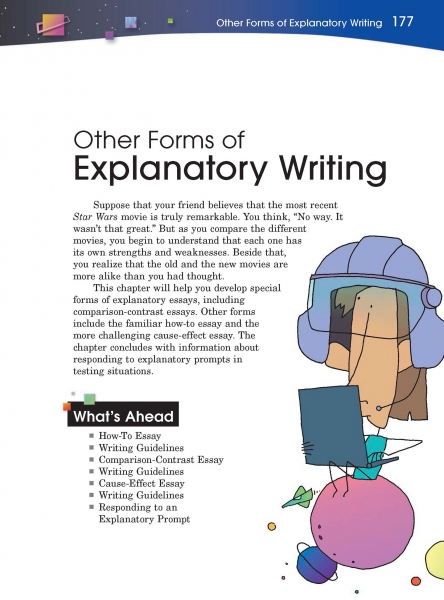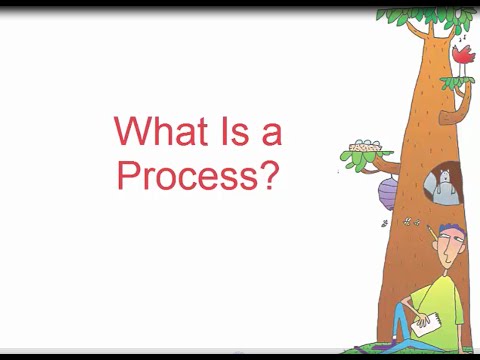Page 177 from

Start-Up Activity
Ask a student to explain how to get from the school gym to the library (how-to). Then ask a different student to explain the difference between the gym and the library (comparison-contrast). Finally, ask a third student to explain why the school has a gym and a library at all (cause-effect).
Point out that the same topic can have different explanatory purposes. If you wanted to understand the difference between the gym and library, you would not be satisfied for someone to explain how to get from one to the other. In this chapter, students will learn how to write to these other explanatory purposes.
Think About It
“Grown-ups never understand anything for themselves, and it is tiresome for children to be always and forever explaining things to them.”
—Antoine de Saint-Exupéry

Start-Up Activity
Ask a student to explain how to get from the school gym to the library (how-to). Then ask a different student to explain the difference between the gym and the library (comparison-contrast). Finally, ask a third student to explain why the school has a gym and a library at all (cause-effect).
Point out that the same topic can have different explanatory purposes. If you wanted to understand the difference between the gym and library, you would not be satisfied for someone to explain how to get from one to the other. In this chapter, students will learn how to write to these other explanatory purposes.
Think About It
“Grown-ups never understand anything for themselves, and it is tiresome for children to be always and forever explaining things to them.”
—Antoine de Saint-Exupéry



